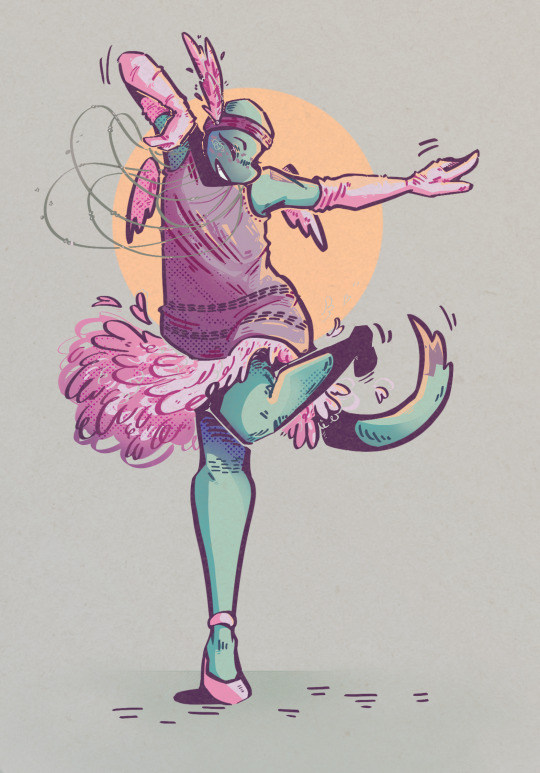#competition dance
Explore tagged Tumblr posts
Text
hey slays, i’m totally new to tumblr so excuse me if idk what i’m doing 🫣 some quick facts about me!!
i’ve been in the ld fandom for a while, and i had an insta fan acc at one point
my favorite studios are expressenz, mather, p21, and club
just a few of my favorite dancers: the jarboe sisters, haas sisters, foertsch sisters, and szyndlar sisters, gracyn french, maddie ortega, nyla mccarthy, dyllan blackburn, and olivia taylor
anyways please be my friend, i promise i’m nice
20 notes
·
View notes
Text
pave
Can someone pls explain pave teams I really don’t get it. Last years Newbies and Rookies are posting pave pro? Plus it seems Amanda and Alexis quit pave which is shocking after their success at nationals.
4 notes
·
View notes
Text
I loveeee learning to ride the waves
4 notes
·
View notes
Text
hi everyone i'm new to tumblr and the dance fandom! i grew up a competitive dancer and now am starting to teach dance🕺🏼 my favourite studios to watch are larkin, p21, club, and mather:) i'm a jazz girly at heart but really appreciate all styles of dance❤️
3 notes
·
View notes
Text
Hello! Competitive Dancer, Taylor Swift fan!!!
1 note
·
View note
Text
I hate when people say that dance isn’t a sport like bro stfu
1 note
·
View note
Text
SURPRISING Reasons Why Some Dance Adjudicators Reward Trick-Laden Routines
I bet you dance teachers and parents can relate: some dance competition adjudicators reward routines with the most tricks crammed apiece. Social media is rife with comments about them.
One teacher pleaded, “I also feel that one of the many ways to change this is up to us instructions, directors, and choreographers, specially in the competition circuit: we need to stop to glamorize tricks over substance.”
“We need to stop rewarding dangerously achieved contortionist-like positions and tumbling-style choreo that have no meaning. These don't belong in a dance choreography especially when they don't help to tell a story or have a connecting step. What happened to artistry, musicality, hard work, technique? When did it become ok to leave this out?”
“If we stop choreographing that in, and present a piece where dancers DANCE, we will be able to change this from within. I am not alone on this and if we all unite we can make the change! It may be hard at the beginning because some of those professionals who judge will go for the awe provoking trick, but we need to be consistent and change will happen.”

As a dance history buff, I turned to Poe – Quora’s free app in which you can ask their AI bots questions – on why some dance adjudicators do those things. Here are key points:
1. Entertainment Value: Tricks can be visually impressive and captivating for the audience. Judges may reward routines with many tricks because they believe it enhances the overall entertainment value of the performance. These moves can generate excitement, thrill, and leave a lasting impression on the viewers.
2. Trend Influence: Dance competitions, like any other field, can be influenced by trends. If there is a current trend or popular style that emphasizes tricks or acrobatic elements, judges may be more inclined to reward routines that align with these trends to reflect the preferences of the dance community at that time.
I have to say that those reasons are most valid takeaways when it comes to a number of, as opposed to all, dance adjudicators who reward the most trick-intensive routines.

But a chapter in the book Rooted Jazz Dance: Africanist Aesthetics and Equity in the Twenty-First Century further provided me with more insight on this. It made me realize that the ones who reward the most trick-intensive routines byproducts of choreographic anti-intellectualism. This is when the dance industry places greater emphasis on fame and trend influences over history, safe technique, and heritage, especially in jazz dance.
Utah high school jazz teacher Jessie McCullough noticed initial resistance from her incumbent students when she started teaching the genre, and her classes were different and had more movements rooted in African American heritage.
In her classes, dancers would wear school dress code-compliant dancewear as opposed to bra tops and booty shorts over bare legs. Turkey trots, Savoy kicks, eagle slides, and Jump Charlestons would trump over calypso leaps, a la seconde turns, turning disc jumps, and firebird leaps. The students wouldn’t compete at commercial competitions, but instead they’d dance in their annual showcases.
They key root of McCullough’s students’ resistances is ego orientation, a strong comparison with others and a desire to win.
“Students with ego orientation can have lower self-esteem, suffer from performance anxiety, and have a tremendous fear of making mistakes and an addiction to perfectionism,” she explained on Chapter 18 of Rooted Jazz Dance.
“These fears can greatly impact a student’s ability to engage with new material. As they have a learned desire to equate quality dancing with Eurocentric models of perfectionism, exploring jazz from a new perspective can be disconcerting.”

And it doesn’t help that the staple competitive dance jazz movements stem from Caucasian-majority aesthetic sports AS WELL AS ballet. For instance, the pirouette detire – known as the “leg hold turn” – has its roots in figure skating and rhythmic gymnastics, the latter of which the International Gymnastics Federation calls it in their Code of Points “a split pivot with help.”
McCullough’s students were afflicted with the “illusion of knowing,” the belief that they had learned something when they actually hadn’t. “Competition students can cling to learned beliefs about jazz out of a desire for correctness,” she further explained.
“Competition rewards virtuosic movements, often referred to as ‘tricks,’ and teaches students that sharp, aggressive, sassy, and/or sexy movements are jazz. Add to this a fierce loyalty to competition teams and coaches – and a top prize-winning jazz routine – and students may falsely believe that competition versions of jazz are ‘true jazz’ and the instructor new, sometimes contradictory ideas is ill-informed.”
To further confirm reasons why some dance judges reward the most trick-intensive routines, those two traits – further exacerbated by trend influences on social media and reality television (e. g., SYTYCD and Dance Moms) – combine to create cognitive dissonance.
“I see very little choreography in competition dance that would be ‘at home’ on the Broadway stage or in a concert dance company,” Luigi Technique teacher Bill Waldinger explained on the cognitive dissonance, “And similarly, a piece like Bob Fosse’s ‘Rich Man’s Frug,’ brilliant as it is, would not do well at a competition due to its lack of technical difficulty despite its incredibly challenging artistic demands.”
All the key factors lead to confirmation bias, a tendency to seek information that concerns rather than discredits current beliefs.
McCullough recalled, “When exploring vernacular jazz, students in my class sometimes struggle to make their own choices regarding movement possibilities in improvisation and movement creation activities. They often fill their improvisations and choreographies with the virtuosic movements, valued at competition, striving for a previously learned version of ‘correctness.’”
She concluded on the high-scoring, highly-trick-intensive routines, “(They) are highly commercialized and often utilize Eurocentric technique. These portrayals inform student expectations of jazz and influence what studios teach, reinforcing a belief that commercialized representations of jazz are most valuable and uphold students’ illusion of knowing.”
As Bob Boross, a pupil of Jack Cole protégé Matt Mattox, lamented in 1996, “Our dancers are going through their dance careers with blinders on, ignorant of the rich heritage of social and theatrical dance styles that make up the whole of the jazz dance experience.”
“They also are growing up without exposure to real jazz music - music that swings. Our dancers are performing a hybrid theatrical movement to pop music, but probably wouldn't know a Lindy from a Shorty George. Finally, they are being given the impression that jazz dance is only commercial - to entertain or impress.”
Some of those same dancers eventually grew up to be THOSE dance judges who’d score the most trick-laden routines highly. Most of them, in fact, lacked sufficient exposure to vernacular jazz dance as well as all genres of jazz music.
“It’s important to note that while tricks can be impressive and exciting, they are not the sole criteria for judging a dance routine,” the Poe answer read, “Other elements such as musicality, technique, choreography, interpretation, and overall performance quality should also be taken into consideration to ensure a fair and balanced evaluation of the dancers' abilities.”
Especially regarding musicality and performance quality, the best way to shift judges perceptions on tricks being more prize worthy is using trend influences to teach jazz dance history.
It’s highly understandable that the latter group of people have very tight schedules and are often too hard-pressed to read books on it, hence why some would reward the more trick-intensive routines in the first place. But they mostly have extra free time to watch old footage of vernacular jazz or videos of previous Lindy Hop competitions on YT.
youtube
We should encourage dancers, their supporting kin, dance teachers, and judges to follow accounts that show insights on it such as Sue Samuels’ Jazz Roots, Pat Taylor’s JazzAntiqua, and Afro Lindy Hopper.
Sharing video footage and photos of celebrated POC figures in the genre such as Pepsi Bethel, Eithel Smith, and Ed Mock (whose named company’s member was the late lyrical dance choreographer Doug Caldwell) on social media is a convenient way to help dance judges – and teachers and students – understand and learn from jazz dance history.
Students – and teachers themselves – may also tape themselves (with proper technique and background knowledge teaching) dancing those rooted moves, Charlestons included. Who knows – will the Black Bottom become the NEW a la seconde turns? Will the Jump Charleston match the popularity of the firebird jump?
youtube
#zazzlemade#jazz dance history#vernacular jazz dance#dance competitions#competition dance#dance history#black history month
0 notes
Text
Hey dancers of tumblr reblog if you’ve ever lost a toenail because you danced too hard I’m tryna see something
#dancer#dancers#dancers of tumblr#dance#dance is a sport#competition dance#competitive dance#toenails#dancer feet#dancer problems#ballet dancer#dancer body#lost another fucking toenail
0 notes
Text
The sort of gender expression I’m going for can be described as “only boy in a competition dance number.”
1 note
·
View note
Text

Day 598
As a ballroom girlie I am legally required to draw Pearl ballroom dancing as per her latest Hermitcraft episode of building a ballroom. So I asked Mod Cosmic to pick a hermit for her to dance with and she also helped design Pearl's dress and pushed me to go FULL fantasy with their dresses which I'm SO happy she did
I know Gem is usually more affiliated with like nature and plants and stuff but I really wanted to put waves on her dress, and also the duality of the sky and the sea is very very good and I am a big fan of it aha
(By the way they're dancing viennese waltz and Pearl is leading)
(still on indefinite hiatus ^^;;;)
#daily pearl doodles#pearlescentmoon#geminitay#mod morph#hermitcraft#now it is not recommended for both dancers to be wearing a dress when it comes to ballroom#because the focus of the dance can get confusing#this is referring to competition and performance btw#uhhh with the flare it could also interfere if both dresses are kind of big#for yknow collision reasons#BUT THIS IS ART AND WE CAN DO WHATEVER WE WANT BABEY THEYRE BOTH IN DRESSES
690 notes
·
View notes
Text


One of my moots! @bluesgras !!
Good luck in the au competition, the spitfire bros are cheering you on・:*+.
#gotta show love to ma moots that are competing#happy little dance as I draw different AU’s#tmnt snapdragon#tmnt au competition#tmnt spitfire#tmnt spitfire au#rottmnt spitfire au#rottmnt spitfire#tmnt crossover#my art#tmnt#rottmnt#tmnt au propaganda#<—- I guess sorta?#art 4 others
1K notes
·
View notes
Text
New here
I am Elewood, 18 from Canada
My favourite dancers are the Szyndlars, Savanah Manzel, Lily Anderson, Ava Wagner, Taylor Morrison and Crystal Huang.
May upload dances I have recorded if I figure out all the rules.
May upload my own dance progress here and possibly YouTube.
Pfp is of little me in my ballet dance costume lol.

3 notes
·
View notes
Text

tango dancing zosan!! based off of this post by @apollo41writes!
funny how zosan is one of my favourite ships but this is the first time ive drawn them XD
#one piece#one piece fanart#fanart#sanji#one piece sanji#one piece zoro#roronoa zoro#zoro#zoro x sanji#blackleg sanji#pirate hunter zoro#sanji fanart#zoro fanart#zosan#one piece zosan#tango dance#with: nami#with: luffy#with: usopp#with: chopper#theyre so silly#I have a backstory so basically the crew stopped on this random island that was holding this dance competition where the prize was berries#Nami immediately put these two in and Sanji couldnt say no bc obviously and zoro couldnt say no bc of his huge ahh debt#Help i just realized i put sanjis hair and eyebrow on the wrong side pls forgive me#In her defense it was a win-win free berries and free entertainment
266 notes
·
View notes
Text
Hi turtle fans, do you like tmnt events? Comps? Zines? Well, good news! I gathered them all in a spreadsheet!! If I get anything wrong, please tell me, btw :3 (or if you know any other blogs - just please avoid anything that has tc*st in it)
Please reblog to help!! :D

#rottmnt#tmnt 2012#tmnt 2003#tmnt 1987#tmnt#tmnt iteration#tmnt au#tmnt competition#tmnt event#nighty archive#<- new tag for every single time i make a list or smth lmao#i love that april dancing gif sm btw#oh!!#tmnt zine
238 notes
·
View notes
Text



583 notes
·
View notes
Text

an excuse to draw swanatello as a flapper? :3c well gosh if you insist.
@tmntaucompetition
#now that main brackets are out (kinda) i can start slowly releasing my 1920s propaganda :3c#see? hes not having a TOTALLY bad time#he gets to dance still <3#tmnt au competition#propaganda#rottmnt#rise of the tmnt#rise of the teenage mutant ninja turtles#rottmnt donnie#rottmnt donatello#fidgetwing
838 notes
·
View notes